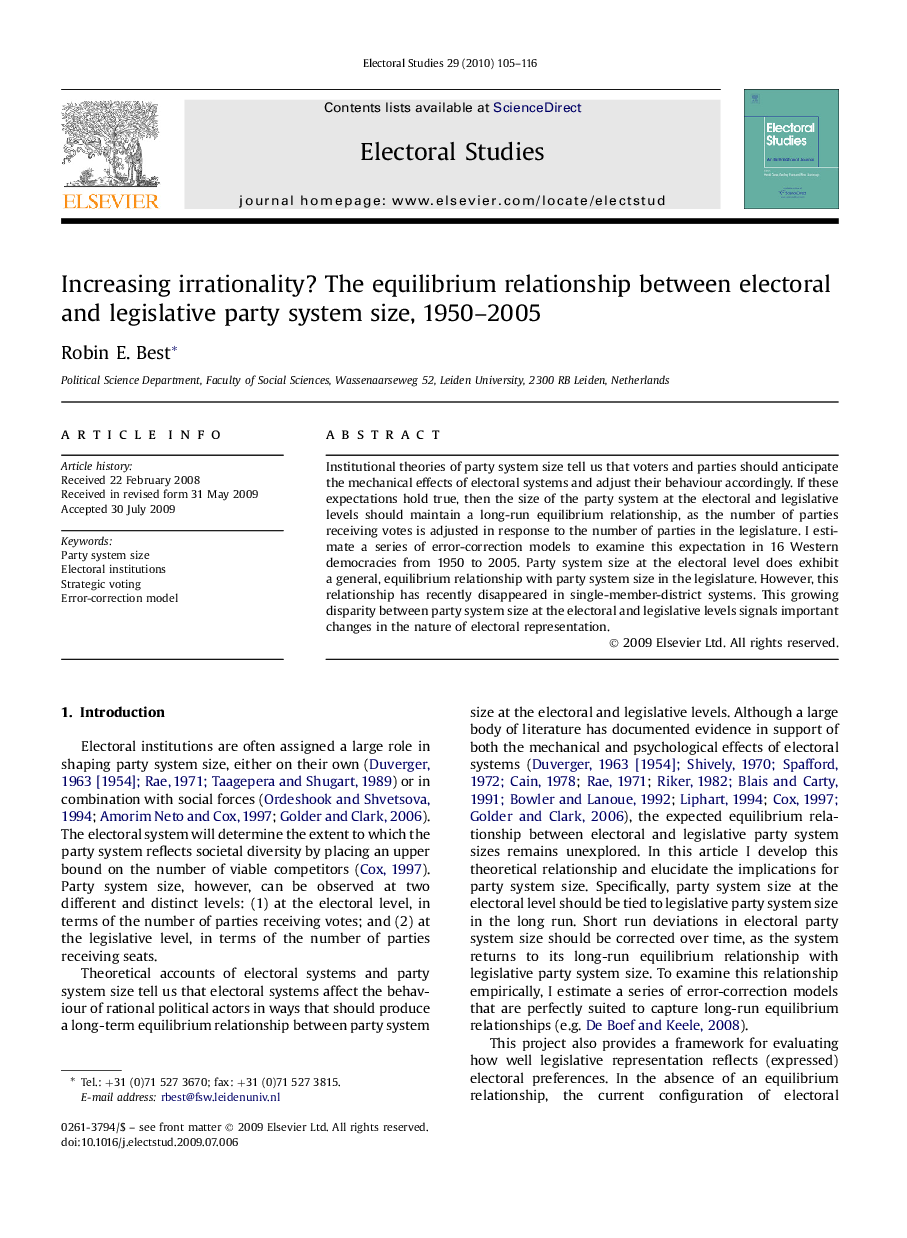| Article ID | Journal | Published Year | Pages | File Type |
|---|---|---|---|---|
| 1051987 | Electoral Studies | 2010 | 12 Pages |
Institutional theories of party system size tell us that voters and parties should anticipate the mechanical effects of electoral systems and adjust their behaviour accordingly. If these expectations hold true, then the size of the party system at the electoral and legislative levels should maintain a long-run equilibrium relationship, as the number of parties receiving votes is adjusted in response to the number of parties in the legislature. I estimate a series of error-correction models to examine this expectation in 16 Western democracies from 1950 to 2005. Party system size at the electoral level does exhibit a general, equilibrium relationship with party system size in the legislature. However, this relationship has recently disappeared in single-member-district systems. This growing disparity between party system size at the electoral and legislative levels signals important changes in the nature of electoral representation.
